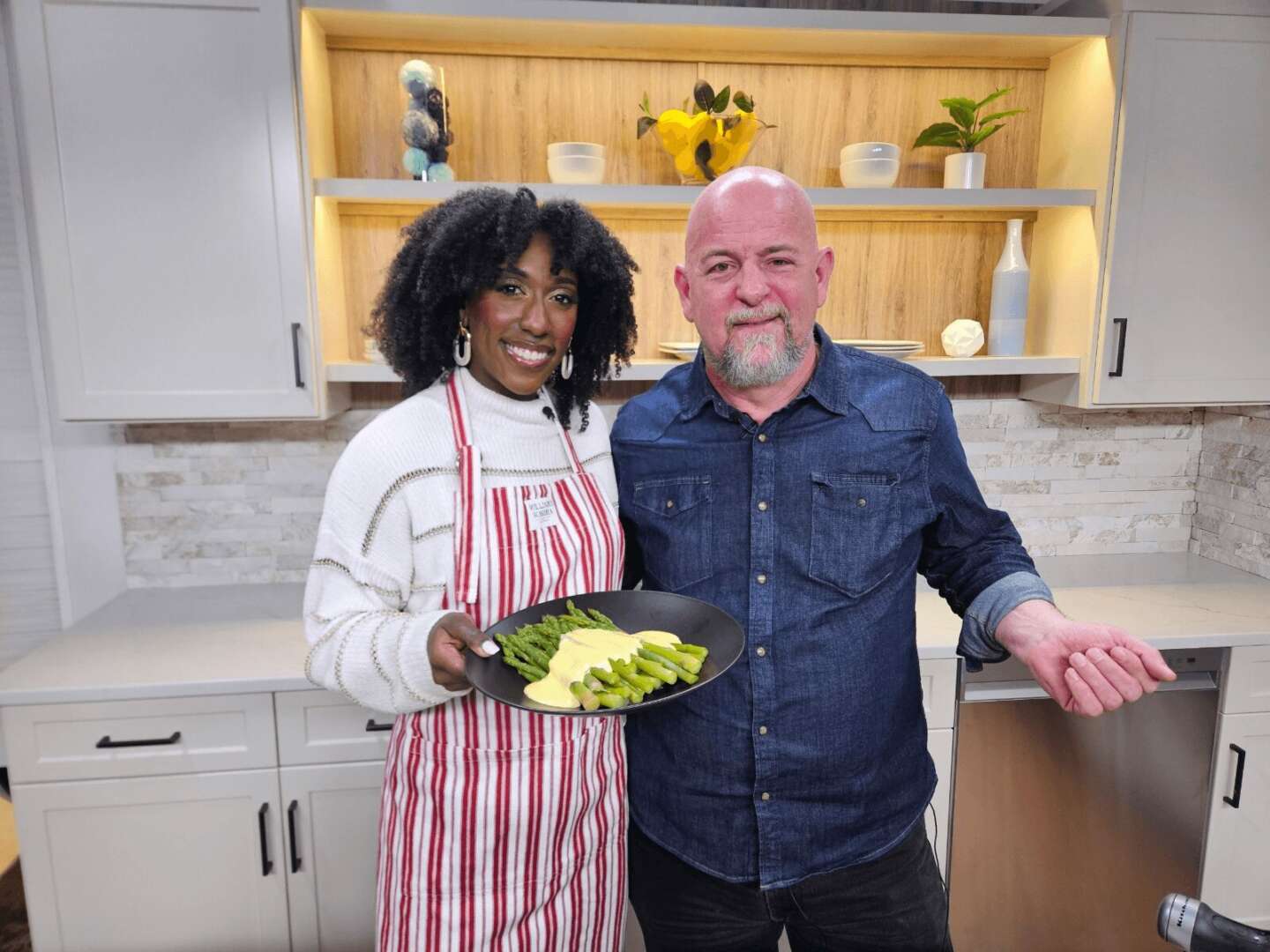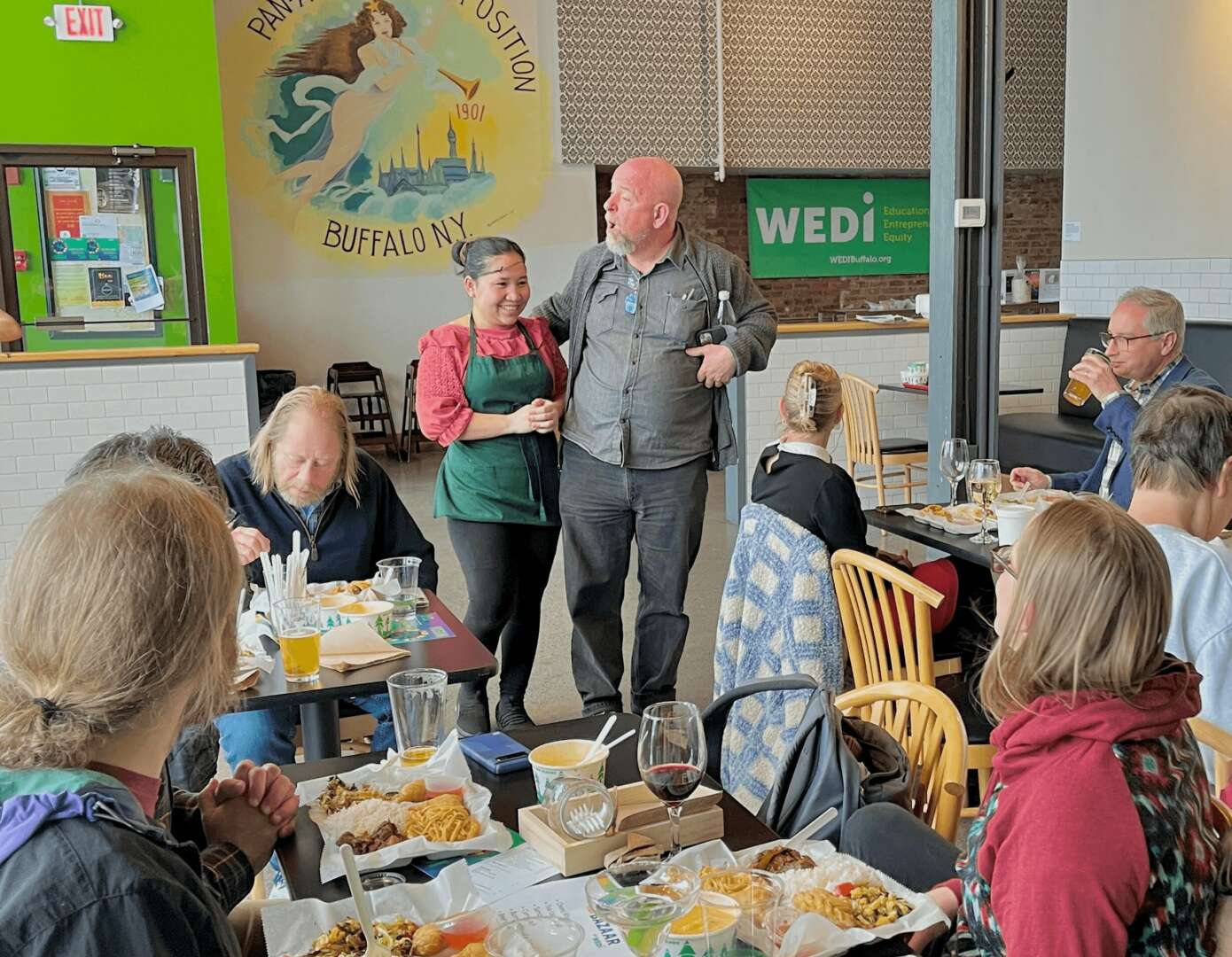We were lucky to catch up with Andrew Galarneau recently and have shared our conversation below.
Andrew, thanks for taking the time to share your stories with us today Let’s start with the story of your mission. What should we know?
I’ve been a community journalist my entire career, starting in 1988. The last 25 years in my home town, Buffalo, where I became food editor at The Buffalo News. When the pandemic hit, I realized newspapers were mostly doomed, and started exploring how to translate my report – all things local food, where to find the best, the people who make it possible – to digital forms. I made my first video last year, and left the newspaper to go indy Dec. 1. I’m determined to find out if a community journalist can make a living via $50 annual subscriptions. I want to help figure out how community journalism can survive as for-profit news media companies continue their decline.


Awesome – so before we get into the rest of our questions, can you briefly introduce yourself to our readers.
In 1983, I arrived at the University at Buffalo, determined to become a writer.
Novels, I was thinking. But UB’s student publications turned me on to community journalism. By doing it, with a 24+ page weekly feature magazine with news, features, arts coverage, columnists, poetry and fiction. We handled writing, editing, photography, design, ad sales and production, distribution. No adults between us and the press. That’s when I fell in love with the challenges of mass communication.
I graduated in 1988, covering communities in New Hampshire, Florida, and Massachusetts before getting hired in 1997 as a feature writer by my hometown Buffalo News. I’d also serve as an investigative reporter before concentrating on food in 2011.
In 2000, I started teaching journalism at my alma mater, as an English Department adjunct. I’m still teaching, and learning at UB. It was my students, a year ago, who convinced me to switch to focusing on video presentations, and get a TikTok account to join my Instagram, Facebook, and Twitter.
As I dug into the restaurant and food beat, I realized that people’s stories – the lives that led them to this moment – did more to sell their products than anything besides food porny dish shots. I used the food beat to do more than alert my audience to what’s tasty. Platforming more people of color in the newspaper’s report more accurately reflect the beautifully diverse stained glass window of Buffalo’s community.
Students in my journalism class convinced me that I needed to learn how to translate my report to TikTok. I’m not all the way there yet, but for a 57-year-old career newspaper employee who made his first video a year ago, I’m making progress.
Once trained by my students, I took off on an exhilarating journey of discovery that continues today. For this word nerd, learning to think in video was like getting a whole new box of Crayons, the 64-pack with built-in sharpener.
Much to the annoyance of my children, I’ve always been a guy with a song in his head, waiting for any excuse to start singing. Now I can hear the song I need when I’m capturing video of, say, a remarkable sandwich. I’m just starting to get the range.
I’ve taken the food report Buffalo News subscribers once enjoyed to my own subscriber base. At FourBites.net, more than 400 people have ponied up $50 for an annual subscription. That’s not enough to make Four Bites my full-time job, but it’s a decent start. Substack has Four Bites classified as a “Best Seller,” which is certainly encouraging.
Meanwhile, I’m putting my decades of contacts and experience to work for a diverse group of collaborators. Snapshots of dishes and restaurants are incomplete without the hands that made them possible in the frame.
Buffalo’s destination marketing agency, Visit Buffalo Niagara, asked me to spotlight 10 Buffalo chefs you should know. A decade of interviews helped me pack 100-word biographies with salient detail.
ARK Media, a documentary maker, sought recent Buffalo immigrants awaiting citizenship who might allow a camera crew to follow them through the entire process of opening a restaurant. I emailed, texted, and visited sources over a two-week period until I could offer producers three.
Buffalo’s Channel 4 WIVB had me on for a cooking segment (shot live and broadcast later) with host Chelsea Lovell. That restored my confidence in my cook-and-talk chops, developed a decade ago by starring in more than 65 food videos developed by Bill Wippert for The Buffalo News.
I’ve launched Tuesdays with Andrew, a monthly series of food exploration events at Buffalo’s Downtown Bazaar, an incubator space for immigrant restaurateurs. The series was prompted by the nonprofit bazaar operator’s request for help in getting more people in the doors. Burmese 101 with Elizabeth Sher of Pattaya Street Food, was the first, in March. Diners sampled classic Burmese cuisine, like tea leaf salad, while I offered historical, cultural, and culinary context. Then Sher answered questions, and got rousing applause.
I’m helping a marketing team produce a campaign on the community-building effects of buying from local farmers. My role includes concept, execution, and production of social media videos giving how-to level information linking audience to sources.
First We Feast, which produces Hot Ones, sent Camera Guy Bill to shoot a pilot episode in his hometown. Which is how I got to talk Buffalo wing history, theory, and practice in Duff’s Sheridan Patio, where I have ordered a double medium, basket of fries for 41 years.
Not every journalist gets to grow with their community. Feels like I got the 64-box of Crayons, after doing my best with the eight-stick starter pack. That’s why I’m looking to the future with new eyes for making manifest the truth of people’s lives and works.


Any stories or insights that might help us understand how you’ve built such a strong reputation?
Showing people I was covering for decades that I was it it for the long haul, not just this story. That I was dedicated to getting their message straight, and getting it out.
That included calling people back to read off anything my story says they said. Plus sending every digitally published story to people quoted it in immediately, so I could correct any errors before it went to press and was preserved in ink and paper. (Newsroom policies forbid sharing complete stories pre-publication.)
It was never a chore.
Over time, word spreads that you’re more invested in the facts than covering your butt. Then people tend to trust you even more.
What’s a lesson you had to unlearn and what’s the backstory?
Journalists cannot get a full sense of what’s happening in their community by reading a computer. They must invest the time to show up. Without leaving the office to spend time in all the spaces where community life happens, reporters rarely get a clue to its hidden truths.
Editors and producers decide daily where their newsroom’s spotlight will focus community attention. Most of the shot-callers are insulated in tastefully lit spaces with coffee in the breakroom and a bathroom around the corner. Most reporters deliver daily stories without leaving the coffee-and-bathroom bubble.
In for-profit newsrooms, financial peril has typically warped coverage toward big spenders. Real estate development headlines blossom across pages, while funding for covering community theater, art, and music gets snipped. This accelerates audience shrinkage, but editors have other priorities. What’s most important to the most people weighs less and less in their calculations.
Without facing new people in your community every day, you cannot get in touch with what’s really happening. The first signs of consequential change are not found in your own cocoon. They are in the conversations being held and experiences being had in places that are currently undocumented on the Internet.
If you don’t know anyone who takes the bus, you’re unlikely to assign reporters to investigate why the transit system is underperforming. If you’ve never met someone evicted by a vengeful landlord, you’re less keen to cover eviction reform law debate. Never talked to someone pulled over for driving while Black? You’re less likely to see value in a story exploring racial disparities in traffic stop statistics.
As writers and other content creators cringe at the advent of AI, this is my life preserver: if we can effectively bringing unheard stories and voices to our shared information space, perhaps there will be a future for community journalists after all.
Contact Info:
- Website: fourbites.net
- Instagram: https://www.instagram.com/buffalofood/
- Facebook: https://www.facebook.com/andrewzgalarneau
- Linkedin: https://www.linkedin.com/in/andrew-galarneau-95249a309/
- Twitter: https://x.com/BuffaloFood
- Yelp: https://www.youtube.com/@fourbites
- Other: TikTok: https://www.tiktok.com/@buffalofoodguy
Image Credits
James Abbondanza Luke Copping Westminster Economic Development Initiative


